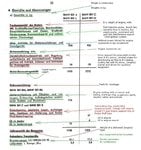So all in all, besides your attempts to take what I said out of context and redicule me you base your whole statement on the low number of hours between overhaul (ignoring that these were no worse than that of other contemporary German V12) you think you read somewhere and your knowledge on piston speeds and rpm. And that is of course better than going with what is documented about the engine in either primary or secondary sources. What is your experience with WW2 era V12s btw and your theoretical knowledge on the Jumo 213 in particular? And I'm not sure what your last sentence is to show: That there were cases where a radial was chosen over an inline?leaving out a German R-2800 is fine with me.
"you work with what you got"
is rather the whole point here isn't it?
the Germans had the Jumo 213 and they had the DB 603 and the had the BMW 801 at a bit less power and that is ALL they had. The 605 was bit small by the end of the war unless it was really pressed.
"you work with what you got"
There is no primary source for it. It is just logic. In German's situation from 1942 onward a high powered engine with a short overhaul life is not a big handicap IF it is used for interceptors or short ranged aircraft. I have no information on catastrophic problems and never said I did. I have been referring all along to service life or overhaul life which is somewhat different isn't it?
The Problem isn't so much RPM as it is piston speed and here the DB 603 was no great shakes either. With it's long stroke and "normal" rpm it had a piston speed of 3190.5 fpm at 2700rpm. The Jumo 213 was either 3520fpm or 4008fpm depending on 3250 rpm or 3700rpm.
For comparison piston speeds for a few other engines are:
R-2800 at 2800rpm.----2800fpm
Merlin at 3000rpm-------3000fpm
Sabre at 3,850rpm------3048fpm
Griffon at 2750rpm------3025fpm
DB 605 at 2800rpm-----2940fpm
Hercules at 2800rpm----3030fpm
Centaurus at 2700rpm--3150fpm
M-105 at 2700rpm-------3100fpm
AM-38 at 2350rpm-------3035fpm
And for a little perspective
1939 auto union Grand Prix V-12 at 7000rpm------3445fpm
1939 Mercedes Grand Prix V-12 at 7500rpm-------3445fpm
1951 BRM Grand Prix V-16 at 11000rpm------------3486fpm
1955 Mercedes Grand Prix I-8 at 8500rpm---------3837fpm
these are straight piston speeds and uncorrected for the Bore:stroke ratio. Some racing engines in the early 50s did go over 4000fpm.
Pardon me if I think that airplane engines that use Grand Prix piston speeds may not have been the best idea. But "you work with what you got".
You are right, so what, I am not the one who brought specific fuel consumption into the discussion.
"you work with what you got"
Then don't say a Jumo 213 with a better supercharger could do what an R-2800 could do.
I didn't say that it was it's intended purpose, I have been saying that for certain jobs, like interceptor the difference in overhaul times wouldn't make that much difference. For long range or long duration flights it would and more from an operational point of view than form a specific, one mission point of view.
An interesting comparison can be made between the Merlin and the R-2800 because both were installed in the same airframe. Granted it was a 4 engined airliner and it was post war but more than one was built of each type and they were flown for a number of years. the Merlin looses this contest but at the time R-2800s had to bought with cash from out side the commonwealth while Merlins were from within the commonwealth.
"you work with what you got"
Last edited:


